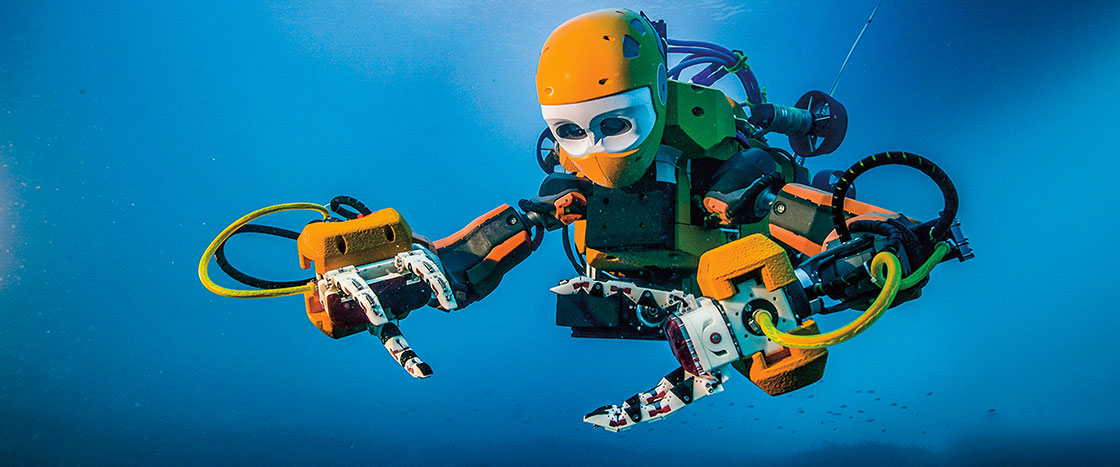FREDERIC OSADA AND TEDDY SEGUIN/DRASSM/STANFORD UNIVERSITY
This robot explores under the sea. It can go deeper underwater than humans can. It explores shipwrecks on the ocean floor.
This robot can go deep in the ocean. It can explore shipwrecks.

You’re going to read a story about a woman who makes robots. People make all kinds of robots! Here are some of them.
1) Robots can explore.
1) Robots can explore.
FREDERIC OSADA AND TEDDY SEGUIN/DRASSM/STANFORD UNIVERSITY
This robot explores under the sea. It can go deeper underwater than humans can. It explores shipwrecks on the ocean floor.
This robot can go deep in the ocean. It can explore shipwrecks.
2) Robots can cook.
2) Robots can cook.
INGO WAGNER/DPA/AFP VIA GETTY IMAGES
Robot chefs help in kitchens. They save people time! They put sauce and toppings on pizzas. Then they place the pizzas into an oven.
But humans have the best job. They eat the pizzas!
Robots can help in kitchens. They can save time! They can make pizza.
Humans eat the pizzas!
3) Robots can save lives.
3) Robots can save lives.
CHUNG SUNG-JUN/GETTY IMAGES
This may look like a Transformer, but it’s a real robot. A human driver sits inside it and tells it where to go.
One day, people could use this robot after an earthquake. The robot could walk over buildings that fell down. It could find people who need help. That is some lifesaving technology!
This real robot looks like a toy. A human sits inside and drives it.
One day, this robot could be used after an earthquake. It could find people who need help.
4) Robots can climb.
4) Robots can climb.
MARK CUTKOSKY, STANFORD UNIVERSITY (ROBOT CLIMBING); WALTER ROHDICH/FLPA/MINDEN PICTURES (GECKO)
What is that climbing up the window? It is a robot that climbs like a gecko.
People have also made robots that fly like a bee. They copy animals to make robots that can go anywhere.
A Stickybot is a robot that climbs like a gecko.
People have copied other animals to make robots. They made robots that fly like a bee and swim like a fish.
5) Robots can be friends.
5) Robots can be friends.
LARRY FRENCH/GETTY IMAGES FOR SONY (ROBOT DOG); PAVEL HLYSTOV/SHUTTERSTOCK.COM (BALL)
Aibo (EYE-boh) is a playful robot that acts like a real puppy. It can do tricks. Would you want a robot pup?
On the next page, you’ll read about a woman who made robots to be friends. But she didn’t make a puppy! Turn the page to find out more.
This robot can act like a real puppy. It can do tricks. Would you want a robot dog?
On the next page, you’ll read about a woman who made robots to be friends. But she didn’t make a puppy!
About the Article
Next Generation Science Standards Focus
ETS1.A Defining and delimiting engineering problems
ESSENTIAL QUESTION
The big question of this issue of Storyworks 2 is: Does technology make our lives better?
1. BEFORE READING
Preview Vocabulary (5-10 minutes)
2. READ THE ARTICLE (10 MINUTES)
3. AFTER READING
Notice Nosey! (3 minutes)
ELA Focus: Key Details (20 minutes)
ELA Focus: Comprehension (5-10 minutes)
Enrich the Learning: Paired Text